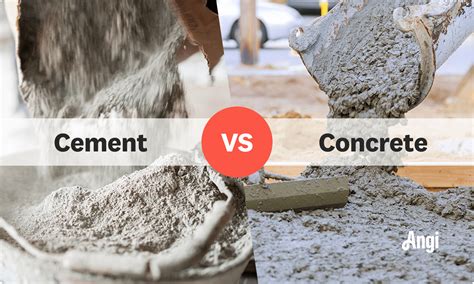Asbestos flooring, once a popular choice for its durability and fire resistance, now poses significant health risks due to its association with serious illnesses like mesothelioma and asbestosis. If your home or property contains asbestos flooring, you may be concerned about the potential dangers and how to address them safely. Understanding the risks, recognizing warning signs, and knowing how to handle asbestos flooring is crucial for protecting yourself and others.
The primary risk with asbestos flooring arises when it becomes damaged or disturbed, releasing microscopic asbestos fibers into the air. These fibers can be inhaled, leading to long-term health issues. However, asbestos flooring that is in good condition and left undisturbed typically does not pose an immediate hazard. The challenge lies in identifying when action is needed and ensuring you take the correct steps to minimize exposure during removal or repair.
This guide will provide actionable advice on managing asbestos flooring, including how to identify it, when to leave it alone, and how to safely remove or cover it if necessary. Whether you're a homeowner, landlord, or renovator, this guide is designed to address your concerns and provide practical, step-by-step solutions to ensure safety and compliance with regulations.
Quick Reference
- Test flooring for asbestos before attempting any renovation or removal.
- Hire a licensed asbestos professional for safe removal if necessary.
- Avoid sanding, cutting, or disturbing asbestos flooring to prevent fiber release.
How to Identify Asbestos Flooring
Identifying asbestos flooring is the first step in managing the risks. Many homes built before the 1980s may still have asbestos-containing flooring, especially in vinyl tiles, linoleum, or adhesive used to secure the floor. Here’s how to determine whether your flooring contains asbestos:
1. Check the Age of Your Home
If your home was built before the 1980s, there’s a higher likelihood of asbestos-containing materials being present. While not all flooring from this era contains asbestos, certain types, such as 9x9-inch vinyl tiles, are strong indicators of its presence.
2. Look for Patterns and Labels
Asbestos flooring often has distinct patterns, such as speckled or marbled designs, which were popular at the time. Additionally, some tiles may have manufacturer labels on the back that indicate asbestos content. If you’re unsure, consult a professional.
3. Conduct Laboratory Testing
The most reliable way to confirm whether flooring contains asbestos is to have a sample tested by a certified laboratory. To safely collect a sample:
- Wear protective gear, including gloves and a mask.
- Lightly wet the area to prevent fiber release.
- Use a utility knife to cut a small piece of the flooring and seal it in an airtight bag.
- Send the sample to a certified asbestos testing lab.
If the test confirms the presence of asbestos, you’ll need to decide whether to leave the flooring undisturbed, encapsulate it, or remove it entirely.
How to Safely Remove Asbestos Flooring
Removing asbestos flooring is a complex and potentially hazardous process. In most cases, it’s best to hire a licensed asbestos abatement professional. However, if you’re legally permitted to handle the removal yourself and feel confident in your ability to do so safely, follow these steps:
1. Check Local Regulations
Before starting any removal project, research local laws regarding asbestos removal. Some jurisdictions require professional abatement, while others may allow DIY removal under strict guidelines.
2. Gather Necessary Equipment
You’ll need the following protective gear and tools:
- Disposable coveralls and gloves
- N95 or P100 respirator
- Plastic sheeting and duct tape
- Water sprayer
- Utility knife or scraper
- Heavy-duty garbage bags labeled for asbestos waste
3. Prepare the Area
Seal off the work area to prevent asbestos fibers from spreading. Use plastic sheeting to cover vents, doorways, and other openings. Turn off HVAC systems to avoid contaminating the air circulation system.
4. Wet the Flooring
Lightly mist the flooring with water to keep fibers from becoming airborne. Avoid soaking the area, as excess water can make the removal process more challenging.
5. Remove the Flooring
Carefully lift and remove the flooring using a scraper or utility knife. Work slowly and avoid breaking the material into small pieces. Place all removed material into asbestos-labeled garbage bags.
6. Clean Up Safely
After removal, thoroughly clean the area using damp rags and a HEPA vacuum designed for asbestos. Dispose of all protective gear and cleaning materials as asbestos waste. Never reuse these items.
7. Dispose of Asbestos Waste
Contact your local waste management facility to learn how to properly dispose of asbestos-containing materials. Never throw asbestos waste in regular trash bins.
While DIY removal is an option in some areas, hiring a licensed professional is often safer and ensures compliance with regulations.
Encapsulation: An Alternative to Removal
If your asbestos flooring is in good condition and you prefer not to remove it, encapsulation may be a practical alternative. Encapsulation involves covering the flooring with a sealant or new flooring material to prevent fiber release. Here’s how to encapsulate asbestos flooring:
1. Clean the Surface
Thoroughly clean the flooring using a damp mop or cloth. Avoid abrasive cleaning methods that could damage the material.
2. Apply a Sealant
Use a specialized asbestos encapsulant or adhesive to coat the flooring. This creates a protective barrier that prevents fibers from escaping. Follow the manufacturer’s instructions for application.
3. Install New Flooring
Once the encapsulant has dried, you can install new flooring on top. Options include carpet, laminate, or vinyl sheets. Avoid nailing or screwing into the old flooring, as this could disturb the asbestos.
Encapsulation is a cost-effective and less invasive option, but it’s essential to monitor the condition of the flooring over time to ensure the encapsulant remains intact.
Can I sand or refinish asbestos flooring?
No, sanding or refinishing asbestos flooring is extremely dangerous as it releases harmful fibers into the air. Always avoid any action that disturbs the material.
How do I know if my flooring adhesive contains asbestos?
Asbestos was commonly used in black mastic adhesive. If your flooring adhesive is black and your home was built before the 1980s, consider having it tested by a certified lab.
What are the health risks of asbestos exposure?
Long-term exposure to asbestos fibers can cause serious illnesses, including mesothelioma, lung cancer, and asbestosis. These conditions often develop years after exposure.
Is it safe to live in a home with asbestos flooring?
Asbestos flooring that is in good condition and left undisturbed is generally safe. However, regular monitoring and avoiding damage are crucial to minimize risks.
Managing asbestos flooring requires careful planning, whether you choose to remove, encapsulate, or leave it undisturbed. By following the steps outlined in this guide and consulting professionals when needed, you can ensure the safety of your home and protect your health.


